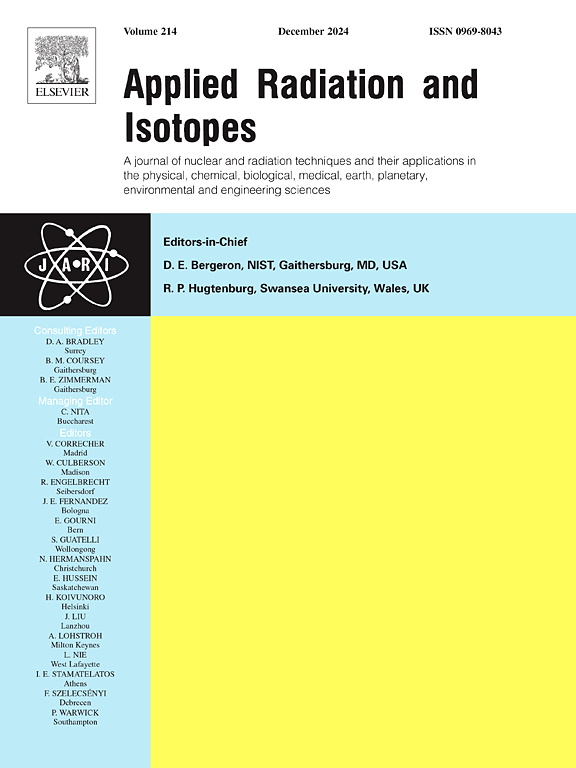多粒子辐照下GaN-HEMT行为的新见解
IF 1.8
3区 工程技术
Q3 CHEMISTRY, INORGANIC & NUCLEAR
引用次数: 0
摘要
研究了光子、中子和α-辐照对30a氮化镓高电子迁移率晶体管(GaN-HEMT)电特性的影响。光子辐照导致漏极电流(ID)在所有栅极电压上显著减小,且非线性偏差随栅极电压的增大而增大。这种现象归因于光子诱导的δ射线,它产生晶体缺陷并改变能带结构。中子辐照主要引起ID-VD特性饱和区域的显著变化,通过中子捕获反应和散射事件突出了独特的相互作用。α-粒子随加热产生原子、原子核和δ射线的联合效应。膝关节电压在不同辐照下缺乏显著的变化表明,损伤主要影响晶格和电子传递机制,而不会改变基本的操作阈值。设计了量子力学方法来阐明辐射应力测量的物理基础,重点关注位移损伤,辐射诱导的嬗变掺杂效应,以及设备内辐射诱导反应的意义。本文章由计算机程序翻译,如有差异,请以英文原文为准。
Novel insights into GaN-HEMT behaviour under multi-particle irradiation
This study investigates the effects of photon, neutron, and -irradiation on the electrical characteristics of a 30 A GaN-HEMT (Gallium Nitride High Electron Mobility Transistor). Photon irradiation leads to a noticeable decrease in the drain current () across all gate voltages, with nonlinear deviations increasing with gate voltage. This phenomenon is attributed to photon-induced -rays, which generate crystal defects and alter the band structure. Neutron irradiation primarily causes a significant shift in the saturation region of the - characteristics, highlighting unique interactions through neutron capture reactions and scattering events. -particles induce combined atomic, nuclear, and -ray effects, along with heating. The lack of significant shifts in knee voltage across different irradiations indicates that damage primarily affects the crystal lattice and electron transport mechanisms without altering fundamental operational thresholds. A quantum mechanical methodology is devised to elucidate the physics underlying radiation stress measurements, focusing on displacement damage, radiation-induced transmutation doping effects, and the significance of radiation-induced reactions within the device.
求助全文
通过发布文献求助,成功后即可免费获取论文全文。
去求助
来源期刊

Applied Radiation and Isotopes
工程技术-核科学技术
CiteScore
3.00
自引率
12.50%
发文量
406
审稿时长
13.5 months
期刊介绍:
Applied Radiation and Isotopes provides a high quality medium for the publication of substantial, original and scientific and technological papers on the development and peaceful application of nuclear, radiation and radionuclide techniques in chemistry, physics, biochemistry, biology, medicine, security, engineering and in the earth, planetary and environmental sciences, all including dosimetry. Nuclear techniques are defined in the broadest sense and both experimental and theoretical papers are welcome. They include the development and use of α- and β-particles, X-rays and γ-rays, neutrons and other nuclear particles and radiations from all sources, including radionuclides, synchrotron sources, cyclotrons and reactors and from the natural environment.
The journal aims to publish papers with significance to an international audience, containing substantial novelty and scientific impact. The Editors reserve the rights to reject, with or without external review, papers that do not meet these criteria.
Papers dealing with radiation processing, i.e., where radiation is used to bring about a biological, chemical or physical change in a material, should be directed to our sister journal Radiation Physics and Chemistry.
 求助内容:
求助内容: 应助结果提醒方式:
应助结果提醒方式:


